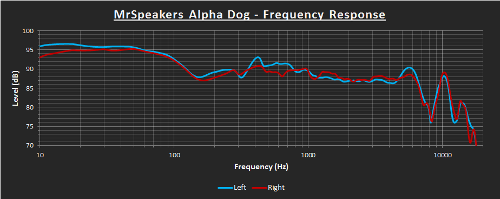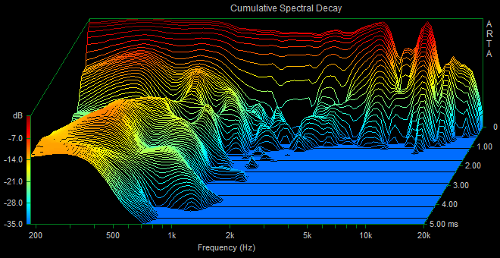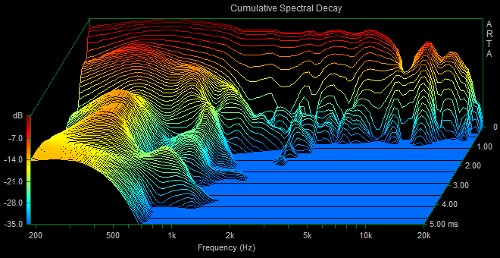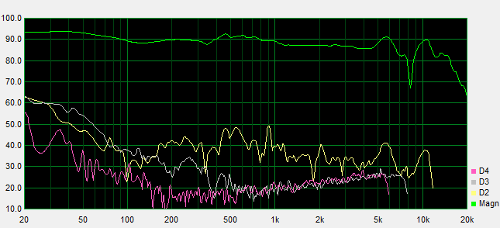It’s a good day for anyone with an interest in inexpensive headphone amps! The Liquid Spark, currently available through Monoprice for a penny shy of $100, occupies the same market space as the Schiit Magni 3. I found the Magni 3 to be a great sounding amplifier, and it really set the bar for amps in its price range. I’m happy to say the Liquid Spark is a worthy competitor. (TL;DR at bottom.)
The amps seem near identical in form and function. Both are solid state, have pre-outs, have a gain switch, are of a similar size, and utilize an external power supply. I had no issues driving my HD650 with ease on both amps, so they both have plenty of power to spare for about anything you might toss at them.
That the two products basically do the exact same thing on a functional level is good, because it makes the review easy by allowing me to only focus on sound quality.
If I had to generalize right off the bat, I’d say the Liquid Spark sounds a little more like a good tube amp, while still clearly not being a tube amp, whereas the Magni 3 sounds a little more like a good solid state amp. That said, they sound more similar than not, especially if you take a step back and hear their similar tone and presentation in a broad scope: slight warmth, agreeable treble, but close enough to neutral to not necessarily be called colored.
The Liquid Spark has a more spacious, layered sound and gives the midrange more room to breathe as it wishes. It’s a little more laid-back sounding. Again, not too unlike a good tube amp here. The Magni 3 retains a common characteristic I hear from many Schiit amps in that it’s rather forward sounding and a little two-dimensional at times.
However, the Magni 3 does benefit from its forward nature in that it’s a more dynamic and engaging sounding amp. While I’m likely to give the nod to the Liquid Spark for micro-dynamics and nuances, the Magni 3 excels with a sense of muscle. That’s not to say the Liquid Spark isn’t dynamic. It drives the HD650 without making it sound lean or strained, so it has plenty of weight to throw around on its own.
Interestingly enough, I find the Liquid Spark to have slightly cleaner, tighter sounding bass. It took me a while to get over the Magni 3 sounding more powerful in the low end, a main contributor to a sense of macro-dynamics, but inevitably the lower octaves on the Magni 3 started to sound a tiny bit rounded and bloomy in comparison. Still, both have that characteristically clean low-end as you’d hope to find in a good solid-state amp, so I’m splitting hairs here.
Circling back to my comments on the midrange, that’s where I really found the Liquid Spark to do what it does best. The Magni 3’s midrange and treble response can at times sound a bit strained or have the slightest sheen to it, despite being an overall warmer and very agreeable sounding amp. This is the sort of quality you really only notice in direct comparisons, so it’s subtle. The Liquid Spark, on the other hand, has more of an organic ease to the sound, giving everything a natural tone, timbre, and plenty of space to ebb and flow naturally. It has a more natural sense of space, captures reverb a bit better, and sounds a little more graceful overall.
It’s that quality, along with the spacious, airy nature of the Liquid Spark, which reminds me more of a good tube amp. The downside is one might find the midrange and treble to be a bit softer or bloomier sounding than they would like. Nonetheless, I found the amp to never lose details and nuances, as its overall resolution was quite good and at least as good, if not slightly better, than the Magni 3.
If I had to nitpick in one other, related area, it’s that the Liquid Spark’s airy sort of nature can at time give the sense that its background isn’t as clear or black as it should be. The Magni 3 does well in this regard. Though it would up the cost dramatically, perhaps the Spark would benefit from a LPSU?
Overall, the Magni 3’s characteristics are a little more brute-force-like. This plays into its strengths (power, macro-dynamics, engagement, clarity, sharpness) but also its weaknesses (a little too forward, slightly bloomy bass, slightly strained mids and treble in specific use cases).
The Liquid Spark seems internally work with more ease and less intense focus. Again, its strengths are the tube-like midrange and treble performance, clean bass, spaciousness, nuance, and so on. But those wishing for an incredibly sharp and focused sounding amp may want to look elsewhere.
Personally, I’m a little fonder of the Liquid Spark’s presentation. It strikes a really nice balance across the board to my ears. I wouldn’t go so far as to say it’s outright better than the Magni 3, because tastes will play a big role here. Simply put, they’re both excellent amps with an insanely low price point. I’m still amazed at the sound quality both amps offer given their price relative to common offerings from even a few years back. Take your pick, and either will suit you well!
TL;DR
- Comparing to Magni 3, since they basically occupy the exact same space in market (price, function, etc.).
- Spark is a little more tube-like, with a more spacious, layered sound, liquid mids and treble, and a more graceful sound overall. Better micro-dynamics. But some may find its mids and treble just a hair too soft.
- Magni 3 tends to brute-force the sound more, being more forward, aggressive, having greater macro-dynamics, but also has the benefits of sounding more focused, sharper, clearer, and having a blacker background. But it does sound a little strained compared to the Spark.
- Both have similar overall tone, i.e. slightly warm, agreeable, but not too far off neutral.
- Magni 3 may have slightly more rounded bass.
- Both are a steal at $100. Just pick what suits your preferences best.
- Spark may benefit from LPSU, but you’re looking at a significant price bump then.
The amps seem near identical in form and function. Both are solid state, have pre-outs, have a gain switch, are of a similar size, and utilize an external power supply. I had no issues driving my HD650 with ease on both amps, so they both have plenty of power to spare for about anything you might toss at them.
That the two products basically do the exact same thing on a functional level is good, because it makes the review easy by allowing me to only focus on sound quality.
If I had to generalize right off the bat, I’d say the Liquid Spark sounds a little more like a good tube amp, while still clearly not being a tube amp, whereas the Magni 3 sounds a little more like a good solid state amp. That said, they sound more similar than not, especially if you take a step back and hear their similar tone and presentation in a broad scope: slight warmth, agreeable treble, but close enough to neutral to not necessarily be called colored.
The Liquid Spark has a more spacious, layered sound and gives the midrange more room to breathe as it wishes. It’s a little more laid-back sounding. Again, not too unlike a good tube amp here. The Magni 3 retains a common characteristic I hear from many Schiit amps in that it’s rather forward sounding and a little two-dimensional at times.
However, the Magni 3 does benefit from its forward nature in that it’s a more dynamic and engaging sounding amp. While I’m likely to give the nod to the Liquid Spark for micro-dynamics and nuances, the Magni 3 excels with a sense of muscle. That’s not to say the Liquid Spark isn’t dynamic. It drives the HD650 without making it sound lean or strained, so it has plenty of weight to throw around on its own.
Interestingly enough, I find the Liquid Spark to have slightly cleaner, tighter sounding bass. It took me a while to get over the Magni 3 sounding more powerful in the low end, a main contributor to a sense of macro-dynamics, but inevitably the lower octaves on the Magni 3 started to sound a tiny bit rounded and bloomy in comparison. Still, both have that characteristically clean low-end as you’d hope to find in a good solid-state amp, so I’m splitting hairs here.
Circling back to my comments on the midrange, that’s where I really found the Liquid Spark to do what it does best. The Magni 3’s midrange and treble response can at times sound a bit strained or have the slightest sheen to it, despite being an overall warmer and very agreeable sounding amp. This is the sort of quality you really only notice in direct comparisons, so it’s subtle. The Liquid Spark, on the other hand, has more of an organic ease to the sound, giving everything a natural tone, timbre, and plenty of space to ebb and flow naturally. It has a more natural sense of space, captures reverb a bit better, and sounds a little more graceful overall.
It’s that quality, along with the spacious, airy nature of the Liquid Spark, which reminds me more of a good tube amp. The downside is one might find the midrange and treble to be a bit softer or bloomier sounding than they would like. Nonetheless, I found the amp to never lose details and nuances, as its overall resolution was quite good and at least as good, if not slightly better, than the Magni 3.
If I had to nitpick in one other, related area, it’s that the Liquid Spark’s airy sort of nature can at time give the sense that its background isn’t as clear or black as it should be. The Magni 3 does well in this regard. Though it would up the cost dramatically, perhaps the Spark would benefit from a LPSU?
Overall, the Magni 3’s characteristics are a little more brute-force-like. This plays into its strengths (power, macro-dynamics, engagement, clarity, sharpness) but also its weaknesses (a little too forward, slightly bloomy bass, slightly strained mids and treble in specific use cases).
The Liquid Spark seems internally work with more ease and less intense focus. Again, its strengths are the tube-like midrange and treble performance, clean bass, spaciousness, nuance, and so on. But those wishing for an incredibly sharp and focused sounding amp may want to look elsewhere.
Personally, I’m a little fonder of the Liquid Spark’s presentation. It strikes a really nice balance across the board to my ears. I wouldn’t go so far as to say it’s outright better than the Magni 3, because tastes will play a big role here. Simply put, they’re both excellent amps with an insanely low price point. I’m still amazed at the sound quality both amps offer given their price relative to common offerings from even a few years back. Take your pick, and either will suit you well!
TL;DR
- Comparing to Magni 3, since they basically occupy the exact same space in market (price, function, etc.).
- Spark is a little more tube-like, with a more spacious, layered sound, liquid mids and treble, and a more graceful sound overall. Better micro-dynamics. But some may find its mids and treble just a hair too soft.
- Magni 3 tends to brute-force the sound more, being more forward, aggressive, having greater macro-dynamics, but also has the benefits of sounding more focused, sharper, clearer, and having a blacker background. But it does sound a little strained compared to the Spark.
- Both have similar overall tone, i.e. slightly warm, agreeable, but not too far off neutral.
- Magni 3 may have slightly more rounded bass.
- Both are a steal at $100. Just pick what suits your preferences best.
- Spark may benefit from LPSU, but you’re looking at a significant price bump then.
































































How is it compare to the O2?